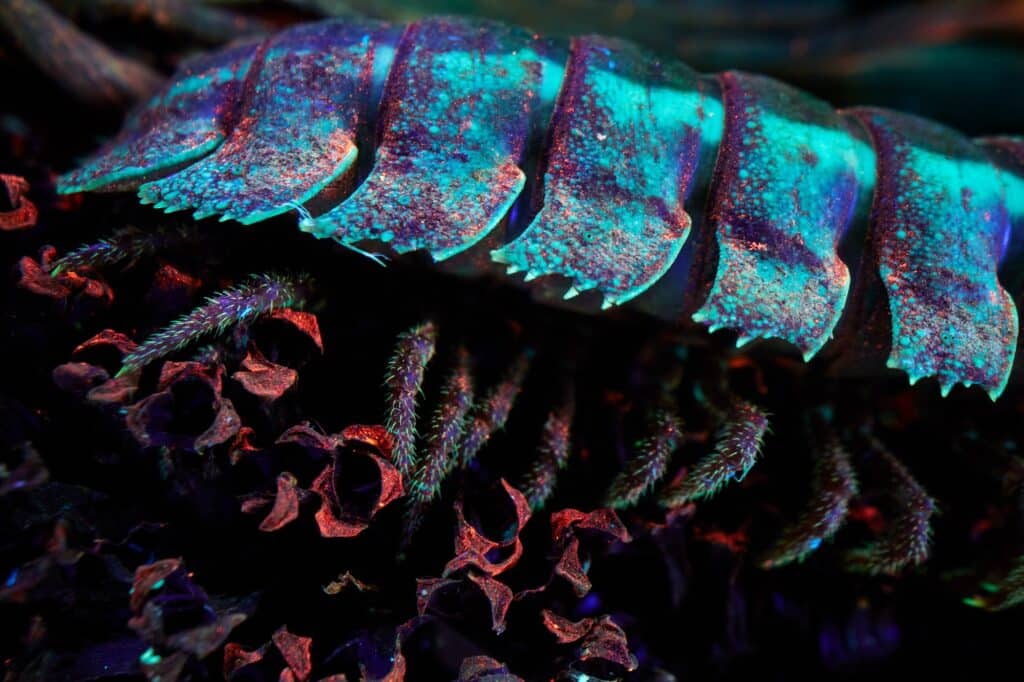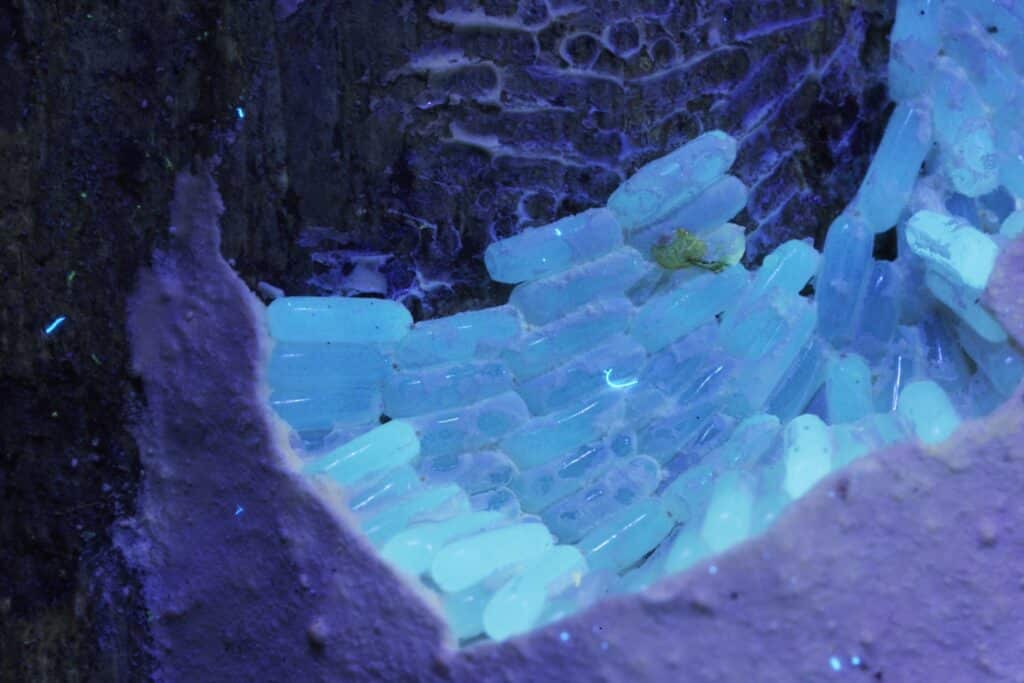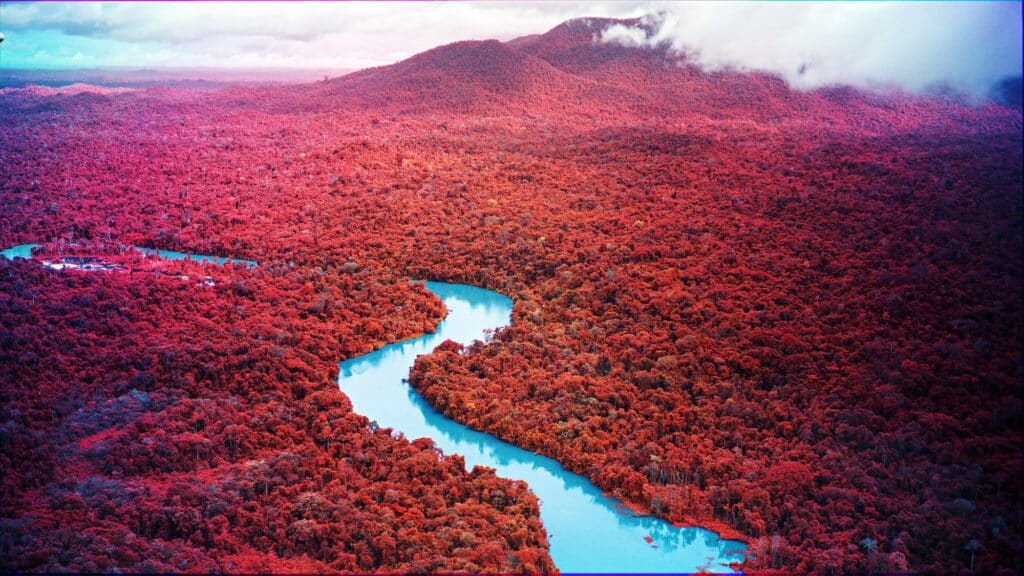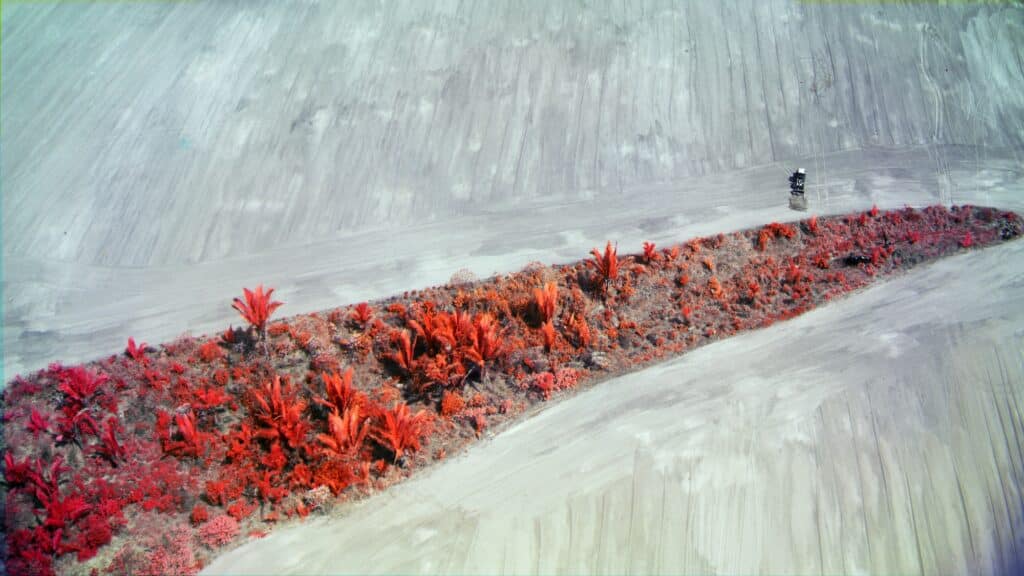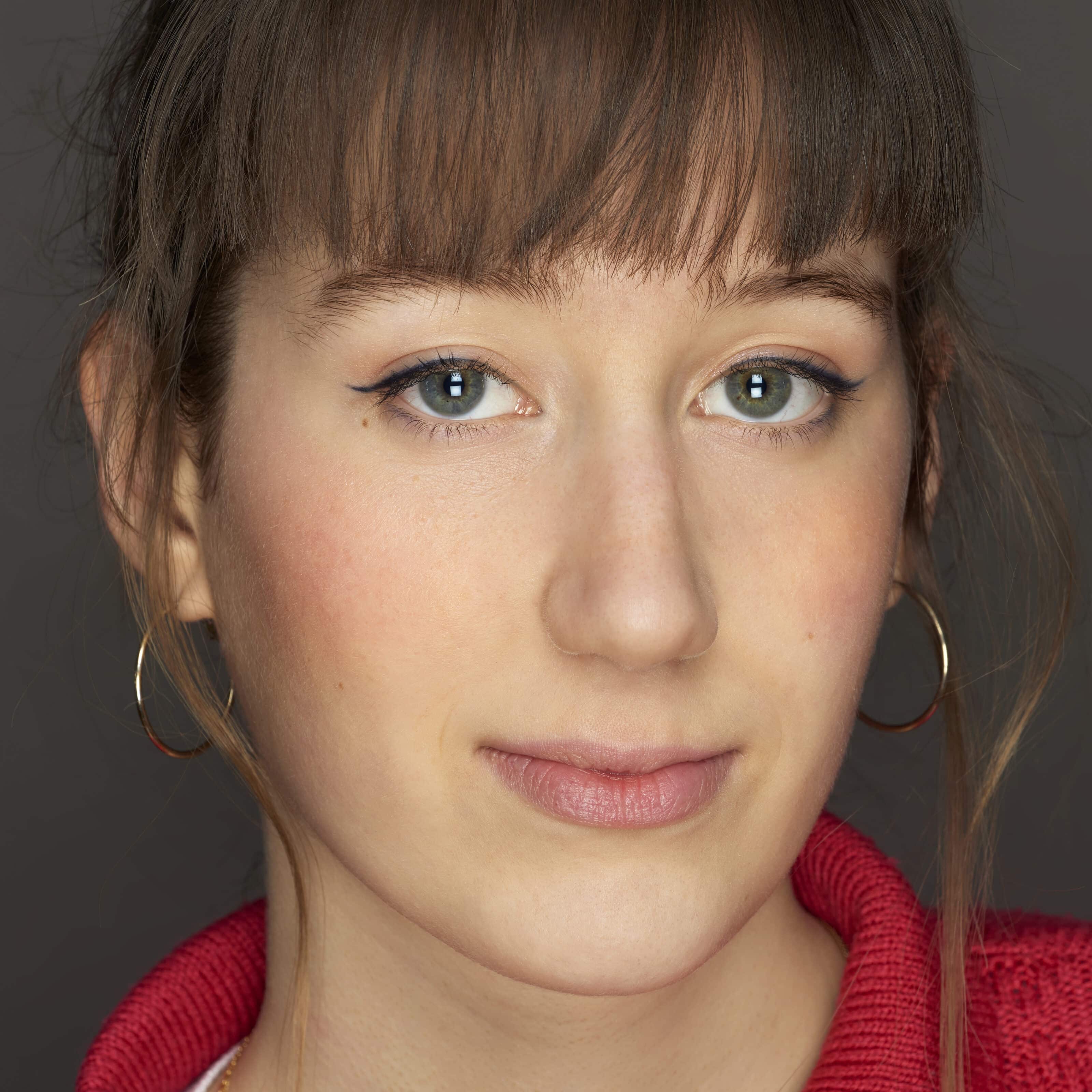Richard Mosse is a master at documenting historically significant subjects using photographic media. Inspired by Claude Lévi-Strauss, and his work Tristes Tropiques, he chose the Amazon as his muse. But rather than glorifying it, he seeks to draw attention to the devastation of the Amazon rainforest. The New York-based Irishman pushes the boundaries of photography with his last work, Broken Spectre, a 74-minute immersive film documenting the environmental damage to the world’s largest reservoir of biodiversity.
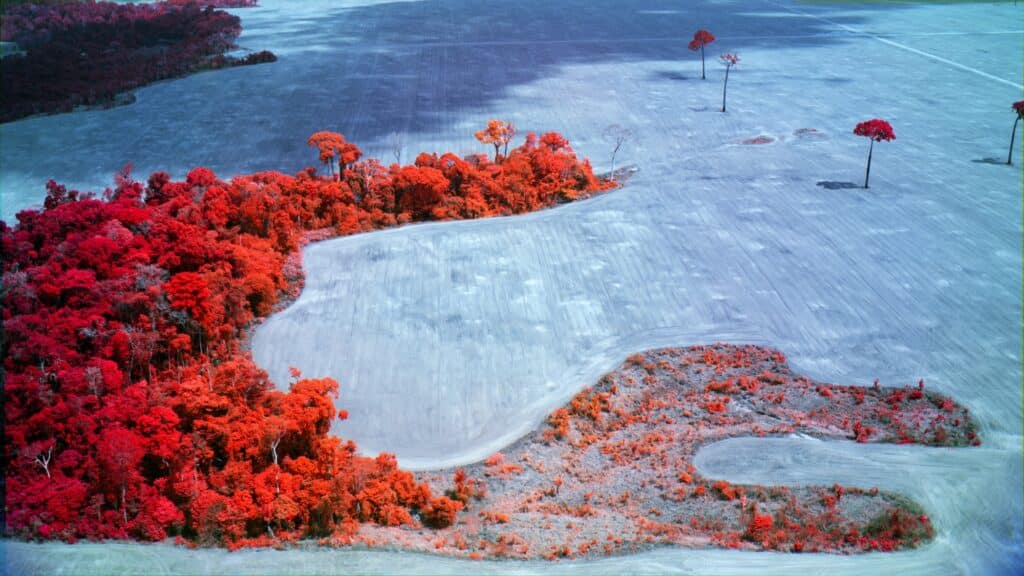
A layered degradation
In a darkened room, projected onto a 19-metre wide screen, ultraviolet images reveal a unique world of microscopic life. The Amazon rainforest is home to over 40,000 plant species and thousands of animals, and above all, a biodiversity imperceptible to the naked eye. At the same time, on the large screen, aerial shots depict vast expanses of empty land, bearing witness to the extent of the degradation caused by deforestation.
From invisible organisms to vast gray expanses, we move from one scale to another. Are we in the infinitely large or the infinitely small? Mosse has chosen three different spectrums to show all the facets of this ecological catastrophe: the macro, the micro and the human scale. He then edits the footage together, superimposing these scales of vision on three screens that sometimes merge, forcing scalar changes.
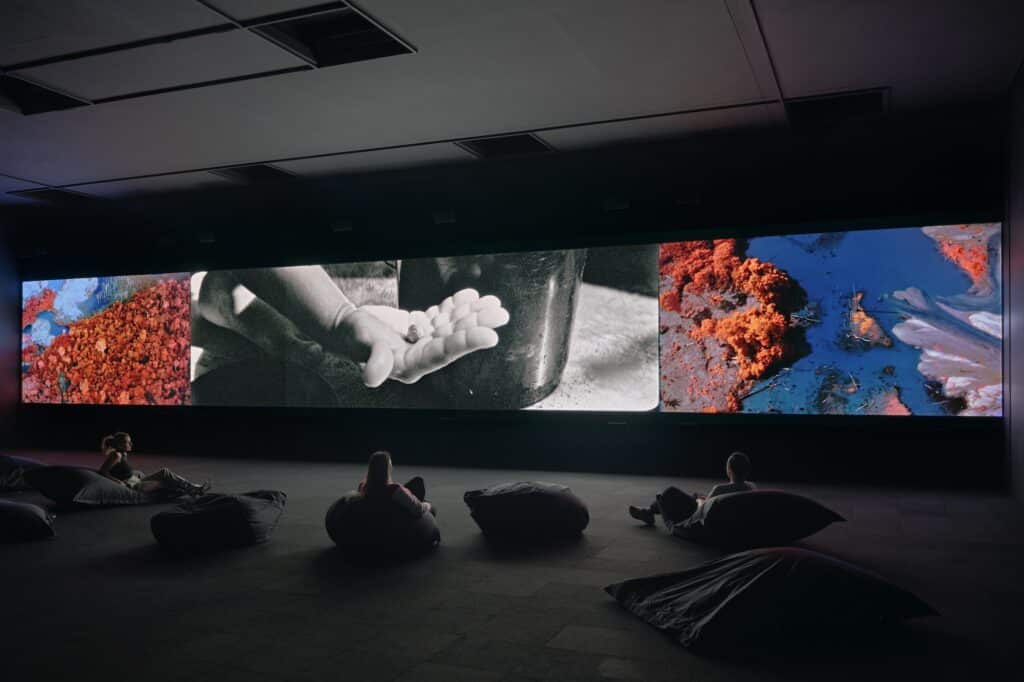
In his own words, Richard Mosse is “a real camera geek”. Broken Spectre uses a range of scientific imaging technologies. Using a custom-designed multispectral camera attached to the nose of a helicopter, we fly over the vast expanses of decimated land. Then, changing scale, we penetrate to the heart of the forest and its soil with a black-and-white S35mm infrared film and anamorphic lenses.
Color and sound are added to this physically impactful scenography. First of all, there’s the scarlet red that spews out its distress, in stark contrast to the turquoise blue of the Amazon River, meandering tirelessly through ancient trees. In this dense, bloody landscape, we hear the cries of the bats, louder and louder, higher and higher. They grow louder and louder, as if to convey a sense of urgency, to grab us by the gut and shake us up. Then suddenly, a crack, and the sound of trees falling to the ground.
To artistically portray the urgency of the situation, Richard Mosse collaborated with composer Ben Frost and American cinematographer Trevor Tweeten.
A global crisis due to human activity
“Bolsonaro, parasite!” Western-inspired black-and-white infrared images capture the anger of Adneia, a young indigenous woman from the Yanomami community. A circle has formed around her, and her words are accompanied by shouts and bursts of encouragement. “Even though I’m a woman, I’ll never give up the fight.” Then, between rage and supplication, she addresses the camera directly: “Help us. Respect us. If you’re here just to film us, it’s not right.”
Every day, indigenous inhabitants and activists see their territories disappear. Because there are other humans living in the Amazon: those who exploit and destroy it. From the survival of the Yanomami and Munduruku indigenous communities, to the Brazilian cowboys who burn their pristine environment to create pastures, Richard Mosse shows both sides of the tragedy.

Massive deforestation began in earnest in the early 1970s when the military regime built the Transamazon Highway. This development wiped out more than a fifth of the original forest to make way for intensive cattle ranching, monocultures such as soy and palm oil, and illegal gold mining.
Richard Mosse repeats: “The Amazon is at a tipping point where 75% of the forest is so degraded by deforestation processes that it will soon stop producing its own rainfall and no longer be a rainforest.” The resulting massive forest dieback and species extinction will release huge carbon emissions into the atmosphere. This will dramatically accelerate global warming and affect weather conditions on both a local and global scale.
Satellite data collected over the last 30 years indicate that, in a few years’ time, we won’t be able to save the Amazon. Richard Mosse warns: “Because it’s happening, we could put an end to it in our lifetime.”
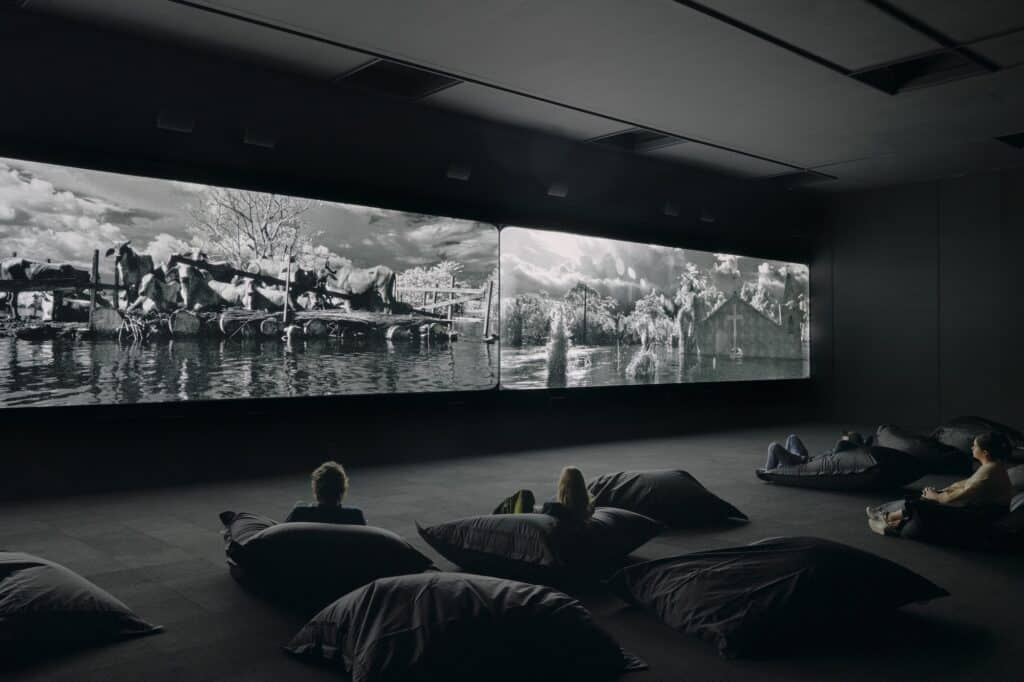
Broken Spectre is currently on show at BOZAR, Brussels, until January 21, 24; at Photo Elysee, Lausanne, until February 25, 2024; at Bentonville, Arkansas until April 14, 2024.

